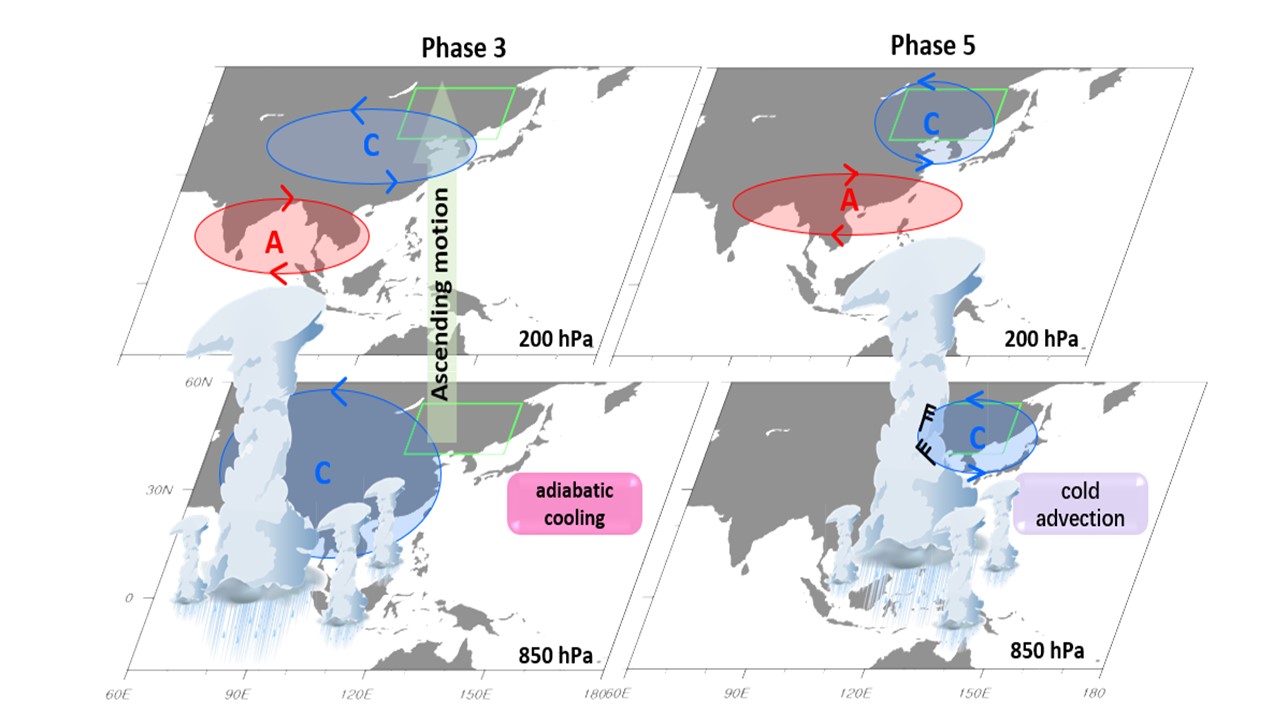Persistent extreme cold events with very cold temperatures for more than three days have occurred frequently in China in recent winters and had devastating effects on agriculture, transportation, power infrastructure and human health. Northeast China is one of the most important regions for food production and is vulnerable to cold damage. A prolonged and extremely cold event of -30℃ to -40℃ was observed in Northeast China and eastern Inner Mongolia Province from mid-January to mid-February 2012, which was the coldest winter since 1991. There were more than 41000 people affected, 25000 houses damaged, and economic losses totaling 1.8 million U. S. Dollars. What drives the occurrence of persistent extreme cold events in Northeast China is an important issue for both the public and the scientific community.
One may assume that persistent cold events are triggered by cold air from the polar regions. Indeed, the high latitudes do play a key role in the occurrence of cold events in Northeast China, as reported in several previous studies. However, a recent paper published in Atmospheric and Oceanic Science Letters, provides another scenario in which the tropical thunderstorms related to eastward-propagating, low-frequency cloud clusters (referred to as the Madden–Julian Oscillation in the meteorological community) may influence the occurrence of persistent cold extreme events in Northeast China.
“We found that the occurrence probabilities of persistent extreme cold events over Northeast China are significantly increased when cloud clusters are located over the eastern Indian Ocean and the western Pacific, but the triggering mechanisms of tropical cloud clusters in the Indian Ocean versus the western Pacific are distinct,” says Dr. Yitian Qian, the first author of the paper and a postdoctoral researcher from Prof. Huijun Wang’s research team at the Nanjing University of Information Science & Technology.
According to their study, when the cloud clusters of the Madden–Julian Oscillation are located over the eastern Indian Ocean, a cooling effect induced by ascending motion over Northeast China appears, favoring the occurrence of persistent extreme cold events. In contrast, cold events in Northeast China are generated by cold-air transportation from northern areas when the tropical cloud clusters propagate towards the western Pacific.
“Understanding the factors influencing persistent extreme cold events in Northeast China may help us to better assess the model prediction skill and thus improve the accuracy of models in predicting these disastrous extreme cold events in Northeast China a few weeks ahead,” concludes Prof. Pang-chi Hsu, the corresponding author of the paper.

Two cooling processes causing persistent extreme cold events in Northeast China, associated with the (a) eastern Indian Ocean and (b) western Pacific cloud clusters of the Madden–Julian Oscillation. Credit: Yitian Qian.

Heavy snow in Northeast China. Photograph taken by Sizhuo Wei.
Citation: Yitian Qian, Pang-Chi Hsu, Huijun Wang, Mingkeng Duan, 2022, Distinct influential mechanisms of the warm pool Madden–Julian Oscillation on persistent extreme cold events in Northeast China, Atmospheric and Oceanic Science Letters, 15, 100226, https://doi.org/10.1016/j.aosl.2022.100226.
|